Products
-
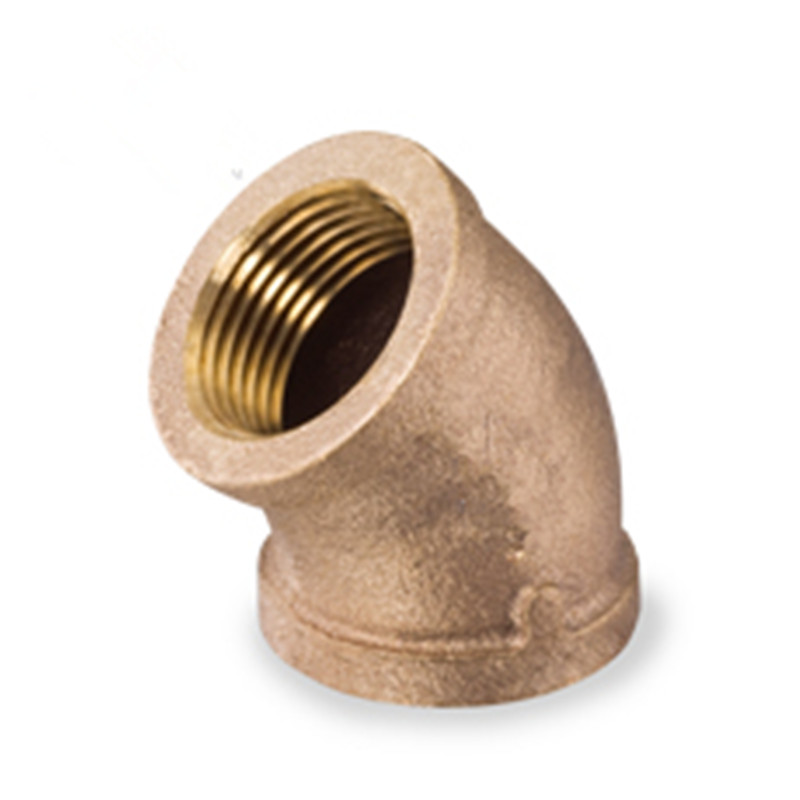
OEM Service Bronze and Brass Pipe Fitting
Basic Info
Fire Hose Fitting Type: Hose Coupling
Hose Coupling Type: Adapter
Fire Hose Length: 20m
Working Pressure: 1.6MPa
Diameter: 80mm
Lining: With Lining
Weaving Type: Plain Weaving
Hose Coupling Structure: Screw
Color: Yellow
Additional Info
Transportation: Ocean,Land,Air -

Precision cast iron tie rod
OEM Stainless Steelcastings, lost wax production craft, machining choice will be according to the actual tolerance request and demand quantity. Most of Our produced castings are used for valves, hydrants, pumps,trucks,railway and train and so on.
Manufacturing technique:Lost Wax Precision Casting
Material: SS316, SS304, 1.4310
Product weight:0.2Kg-200Kg -

Customized stamping die
Metal Stamping Part Manufacturer of Machining
1. We can process different metals product.
2. The surface can electroplate silver and golden bear decay.
3. The product accuracy is high, surface the clean degree is good.
4. Deliver goods in time, the prestige is high, customer satisfaction 90% is above -
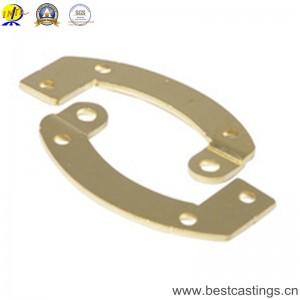
Cast copper stamping parts
Metal Stamping Part Manufacturer of Machining
1. We can process different metals product.
2. The surface can electroplate silver and golden bear decay.
3. The product accuracy is high, surface the clean degree is good.
4. Deliver goods in time, the prestige is high, customer satisfaction 90% is above -
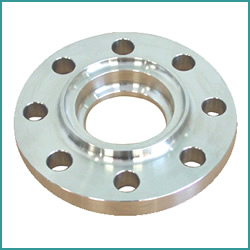
Stainless steel slip on flange Inquir
product presentation :
Flange also called flange or flange.A part that interconnects a pipe to a pipe, connected to a pipe end.There are holes in the flange and the bolts fasten the two flanges together.Gasket between flanges.Flange is a kind of disk, in the pipeline engineering most common, flanges are used in pairs.In piping engineering, flanges are mainly used for piping connections.Install one flange at each end of the two pipes. The low-pressure pipes can be connected with wire flange. Welding flange is used for the pressure of more than 4kg.Place a gasket between the two flanges and bolt them down.
Flanges of different pressure have different thickness and use different bolts.
Pumps and valves, when connected to the pipe, the parts of these equipment are also made into the corresponding flange shape, also known as the flange connection.
General in two planes at the periphery of the use of bolts and closed connection parts, are generally called "flange", such as the ventilation pipe connection, this kind of parts can be called "flange part".
Threaded flange is a kind of flange.The threaded flange connection structure is an assembly, which is composed of a pair of flanges, several bolts, nuts and a gasket.
Product Introduction:
1/2"--30" threaded flange
Chinese standards:
HG5051 ~ 5028-58, HG20592 ~ 20605-97, 20615 ~ 20326-97
HGJ44 ~ 68-91, SH3406-92, SH3406-96
Shj406-89, SHT501-97, SYJS3-1-1 ~ 5
JB81 ~ 86-59, JB/T81 ~ 86-94, JB577-64
Jb577-79, JB585-64, JB585-79
JB1157 ~ 1164-82, JB2208-80, JB4700 ~ 4707-92
Jb4721-92, DG0500 ~ 0528, 0612 ~ 0616
GD0500 ~ 0528, GB9112 ~ 9125-88, GB/T13402-92 -
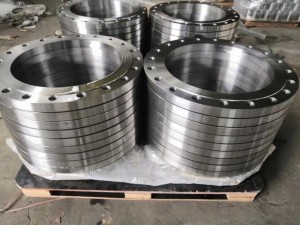
Weld Neck Stainless Steel Flange
product presentation :
Flange also called flange or flange.A part that interconnects a pipe to a pipe, connected to a pipe end.There are holes in the flange and the bolts fasten the two flanges together.Gasket between flanges.Flange is a kind of disk, in the pipeline engineering most common, flanges are used in pairs.In piping engineering, flanges are mainly used for piping connections.Install one flange at each end of the two pipes. The low-pressure pipes can be connected with wire flange. Welding flange is used for the pressure of more than 4kg.Place a gasket between the two flanges and bolt them down.
Flanges of different pressure have different thickness and use different bolts.
Pumps and valves, when connected to the pipe, the parts of these equipment are also made into the corresponding flange shape, also known as the flange connection.
General in two planes at the periphery of the use of bolts and closed connection parts, are generally called "flange", such as the ventilation pipe connection, this kind of parts can be called "flange part".
Threaded flange is a kind of flange.The threaded flange connection structure is an assembly, which is composed of a pair of flanges, several bolts, nuts and a gasket.
Product Introduction:
1/2"--30" threaded flange
Chinese standards:
HG5051 ~ 5028-58, HG20592 ~ 20605-97, 20615 ~ 20326-97
HGJ44 ~ 68-91, SH3406-92, SH3406-96
Shj406-89, SHT501-97, SYJS3-1-1 ~ 5
JB81 ~ 86-59, JB/T81 ~ 86-94, JB577-64
Jb577-79, JB585-64, JB585-79
JB1157 ~ 1164-82, JB2208-80, JB4700 ~ 4707-92
Jb4721-92, DG0500 ~ 0528, 0612 ~ 0616
GD0500 ~ 0528, GB9112 ~ 9125-88, GB/T13402-92 -
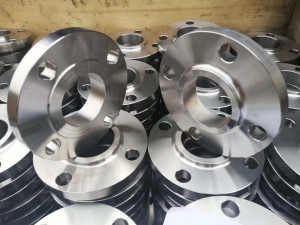
Stainless Steel Threaded Forged Flange
product presentation :
Flange also called flange or flange.A part that interconnects a pipe to a pipe, connected to a pipe end.There are holes in the flange and the bolts fasten the two flanges together.Gasket between flanges.Flange is a kind of disk, in the pipeline engineering most common, flanges are used in pairs.In piping engineering, flanges are mainly used for piping connections.Install one flange at each end of the two pipes. The low-pressure pipes can be connected with wire flange. Welding flange is used for the pressure of more than 4kg.Place a gasket between the two flanges and bolt them down.
Flanges of different pressure have different thickness and use different bolts.
Pumps and valves, when connected to the pipe, the parts of these equipment are also made into the corresponding flange shape, also known as the flange connection.
General in two planes at the periphery of the use of bolts and closed connection parts, are generally called "flange", such as the ventilation pipe connection, this kind of parts can be called "flange part".
Threaded flange is a kind of flange.The threaded flange connection structure is an assembly, which is composed of a pair of flanges, several bolts, nuts and a gasket.
Product Introduction:
1/2"--30" threaded flange
Chinese standards:
HG5051 ~ 5028-58, HG20592 ~ 20605-97, 20615 ~ 20326-97
HGJ44 ~ 68-91, SH3406-92, SH3406-96
Shj406-89, SHT501-97, SYJS3-1-1 ~ 5
JB81 ~ 86-59, JB/T81 ~ 86-94, JB577-64
Jb577-79, JB585-64, JB585-79
JB1157 ~ 1164-82, JB2208-80, JB4700 ~ 4707-92
Jb4721-92, DG0500 ~ 0528, 0612 ~ 0616
GD0500 ~ 0528, GB9112 ~ 9125-88, GB/T13402-92 -

Cast iron engine casing
Cast iron is an alloy consisting mainly of iron, carbon, and silicon.
In these alloys, the carbon content exceeds the amount that can be retained in austenite solid solution at eutectic temperature.
Cast iron is an iron-carbon alloy with a carbon content greater than 2.11% (generally 2.5 ~ 4%).It is a multi-element alloy with iron, carbon and silicon as the main component elements and contains more manganese, sulfur, phosphorus and other impurities than carbon steel.Sometimes in order to improve the mechanical properties of cast iron or physical, chemical properties, but also add a certain amount of alloy elements, alloy cast iron.
As early as the sixth century BC age period, China has begun to use cast iron, than European countries nearly two thousand years earlier.Cast iron is still one of the most important materials in industrial production.
oneAccording to the form of carbon present in cast iron, cast iron can be divided into
1.White cast iron except for a few soluble in ferrite, the rest of the carbon in the form of cementite exists in cast iron, its fracture is silver-white, so called white cast iron.White cast iron is mainly used as raw material for steelmaking and blank for producing malleable cast iron.
2.Gray cast iron carbon all or most of the flake graphite exists in the cast iron, its fracture is dark gray, so called gray cast iron.
3.Part of the carbon of hemp cast iron exists in the form of graphite, which is similar to gray cast iron.The other part is in the form of free cementite similar to white cast iron.The black and white pitting in the fracture, so called hemp cast iron.This type of cast iron also has greater hardness and brittleness, so it is rarely used in the industry.
twoAccording to the different graphite morphology in cast iron, cast iron can be divided into
1.The graphite in gray cast iron is flake.
2.The graphite in malleable cast iron is flocculent.It is obtained from certain white cast iron after annealing at high temperature for a long time.Its mechanical properties (especially toughness and plasticity) are higher than gray cast iron, so it is commonly called malleable cast iron.
3.The graphite in nodular cast iron is spherical.It is obtained by spheroidizing treatment before pouring molten iron.This kind of cast iron not only has higher mechanical properties than gray cast iron and malleable cast iron, but also has a simpler production process than malleable cast iron. Moreover, its mechanical properties can be further improved through heat treatment, so it is increasingly widely used in production.
-

Cast iron ring
Cast iron is an alloy consisting mainly of iron, carbon, and silicon.
In these alloys, the carbon content exceeds the amount that can be retained in austenite solid solution at eutectic temperature.
Cast iron is an iron-carbon alloy with a carbon content greater than 2.11% (generally 2.5 ~ 4%).It is a multi-element alloy with iron, carbon and silicon as the main component elements and contains more manganese, sulfur, phosphorus and other impurities than carbon steel.Sometimes in order to improve the mechanical properties of cast iron or physical, chemical properties, but also add a certain amount of alloy elements, alloy cast iron.
As early as the sixth century BC age period, China has begun to use cast iron, than European countries nearly two thousand years earlier.Cast iron is still one of the most important materials in industrial production.
oneAccording to the form of carbon present in cast iron, cast iron can be divided into
1.White cast iron except for a few soluble in ferrite, the rest of the carbon in the form of cementite exists in cast iron, its fracture is silver-white, so called white cast iron.White cast iron is mainly used as raw material for steelmaking and blank for producing malleable cast iron.
2.Gray cast iron carbon all or most of the flake graphite exists in the cast iron, its fracture is dark gray, so called gray cast iron.
3.Part of the carbon of hemp cast iron exists in the form of graphite, which is similar to gray cast iron.The other part is in the form of free cementite similar to white cast iron.The black and white pitting in the fracture, so called hemp cast iron.This type of cast iron also has greater hardness and brittleness, so it is rarely used in the industry.
twoAccording to the different graphite morphology in cast iron, cast iron can be divided into
1.The graphite in gray cast iron is flake.
2.The graphite in malleable cast iron is flocculent.It is obtained from certain white cast iron after annealing at high temperature for a long time.Its mechanical properties (especially toughness and plasticity) are higher than gray cast iron, so it is commonly called malleable cast iron.
3.The graphite in nodular cast iron is spherical.It is obtained by spheroidizing treatment before pouring molten iron.This kind of cast iron not only has higher mechanical properties than gray cast iron and malleable cast iron, but also has a simpler production process than malleable cast iron. Moreover, its mechanical properties can be further improved through heat treatment, so it is increasingly widely used in production.
